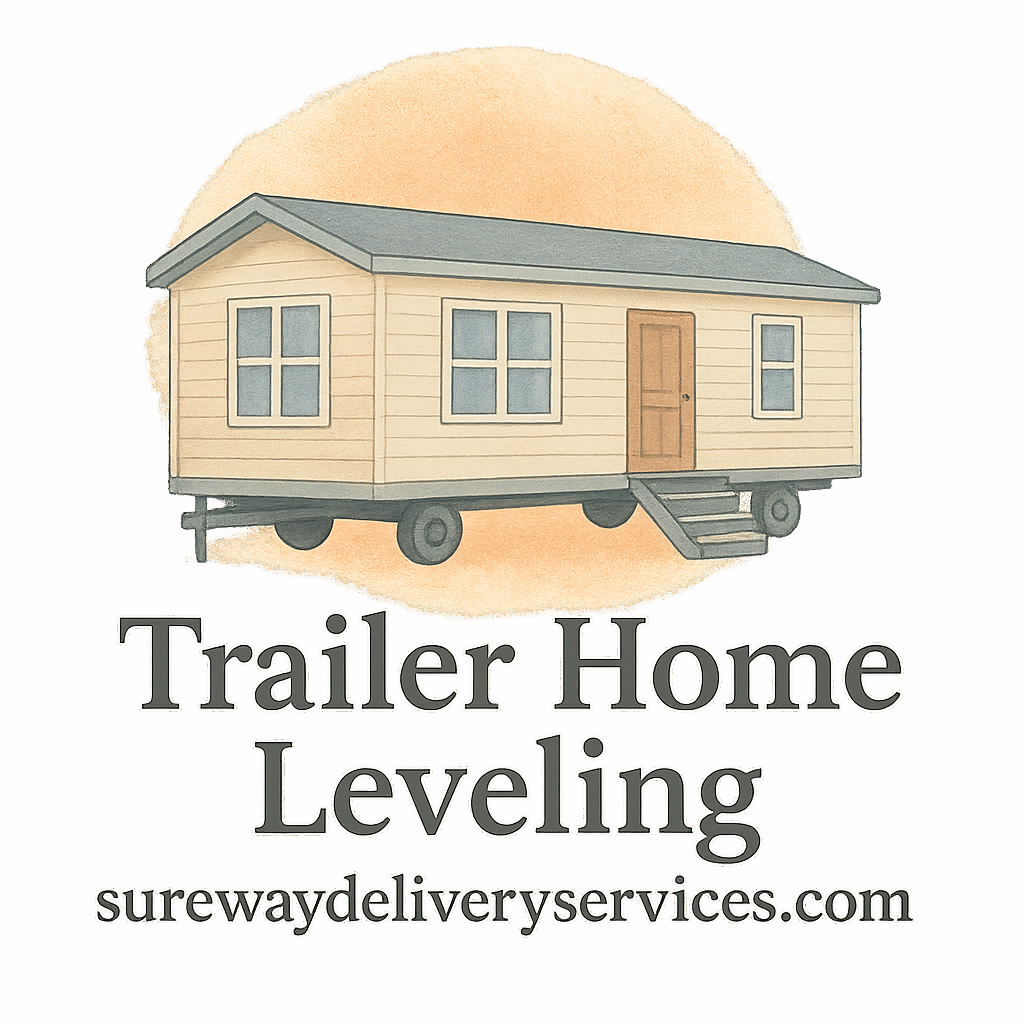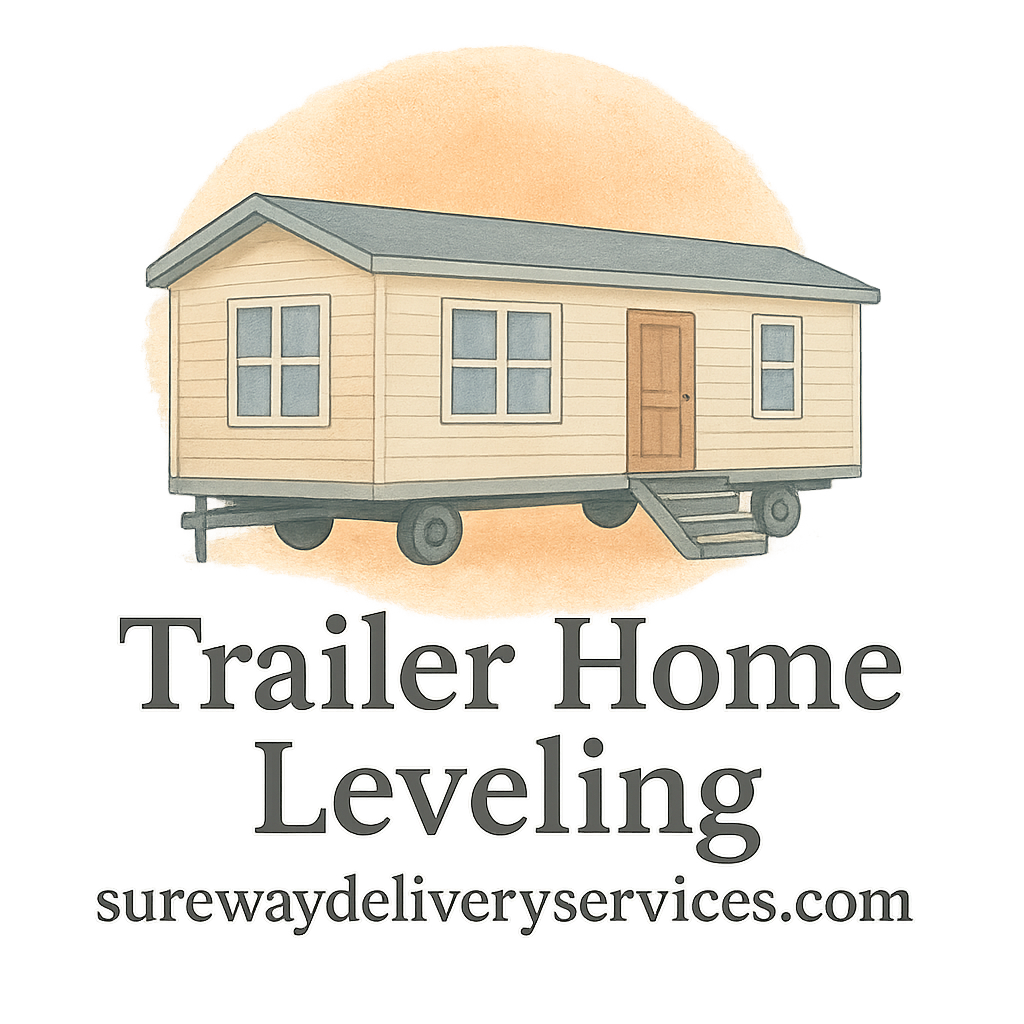Introduction: Why Home Leveling Matters
Have you noticed your doors sticking, or your floors feeling uneven? These might seem like small annoyances, but they could be signs that your home is out of level—and trust us, that’s not something you want to ignore. Whether you’re living in a mobile home or a permanent residence, home leveling is crucial to ensure your foundation is safe, secure, and structurally sound.
Understanding the Basics of Home Leveling
Before diving into the professional techniques, it’s good to understand what home leveling really involves.
What Causes a Home to Become Unlevel?
There’s no single cause. Often, it’s the result of shifting soil, water damage, poor construction, or even natural settling over time. Trailer homes, in particular, are susceptible to these shifts because of their lightweight structure. Learn more in our Basics & Introduction guide.
Key Signs Your Home Needs Leveling
- Cracks in the walls or ceilings
- Uneven or sloping floors
- Doors and windows that won’t shut properly
- Noticeable tilting or leaning
If you’re spotting any of these, check out our full checklist for inspection and get on it ASAP.
The Importance of Professional Home Leveling
Leveling isn’t a casual Sunday DIY job—it affects your entire home’s stability.
DIY vs. Professional Services
Sure, you can try some small fixes yourself, but serious leveling requires expertise. Professionals have access to tools, techniques, and safety protocols that most of us don’t. For a detailed look at choosing services, visit our Service Hiring Guide.
Safety and Structural Integrity
An unlevel home isn’t just inconvenient—it can be downright dangerous. Misalignment affects the plumbing, electrical wiring, and overall load distribution. Professionals help you avoid costly disasters.
10 Professional Home Leveling Techniques Explained
Let’s get into the good stuff—these are the top 10 home leveling techniques experts use to bring homes back to balance.
1. Hydraulic Jacking Method
This is one of the most common methods. Hydraulic jacks are placed under the home and used to lift it evenly. Ideal for trailer homes, this method is fast and effective.
2. Pier and Beam Adjustment
A go-to for older homes with crawl spaces. Pros will adjust or replace piers and re-align beams. Learn about the tools involved here.
3. Slab Jacking (Mudjacking)
Perfect for concrete slab homes. This technique involves pumping a cement slurry beneath the slab to lift it up. It’s like Botox for your foundation!

4. Foam Injection (Polyurethane Lifting)
A high-tech version of slab jacking. It uses lightweight polyurethane foam that expands and hardens to lift the slab. Quicker, cleaner, and often more precise.
5. Steel Pier Installation
Super durable and ideal for major foundation issues. Steel piers are driven deep into stable soil layers and used to support and level the home.
6. Helical Piers
These screw-like piers are twisted into the ground for extra stability. Great for loose or shifting soil conditions, especially helpful for trailer issues.
7. Screw Jack Systems
These are often used in manufactured homes. The jacks are placed at key points under the frame to adjust height. Check our guide on jacks for more insights.
8. Concrete Piling
Concrete cylinders are stacked under the foundation until the proper height is reached. Then, the house is leveled and secured.
9. Soil Stabilization
Sometimes the ground is the problem. Professionals inject stabilizing agents into the soil to prevent further shifting. Read more on this in our techniques & methods guide.
10. Shimming for Minor Adjustments
When only slight leveling is needed, shims (thin pieces of wood or metal) are used under support beams. It’s simple but effective—think of it as leveling a wobbly table.
Choosing the Right Method for Your Home
Factors That Influence Technique Selection
- Type of foundation
- Soil condition
- Extent of damage
- Home structure and age
Professionals assess all of these before recommending a method. Curious about how they decide? Read real success stories.
Budgeting and Cost Considerations
Prices vary widely depending on the technique and home condition. Check out our Cost & Budgeting page and related price tags, cost tips, and ways to avoid overcharges.
Maintaining a Leveled Home Long-Term
Getting your home leveled is only part of the journey. Keeping it that way is the next challenge.
Annual Inspections and Maintenance Tips
- Schedule annual checks
- Inspect for cracks or new shifts
- Keep an eye on drainage and landscaping
For more, visit our maintenance & inspection section.
Tools Every Homeowner Should Have
- Level or laser level
- Flashlight for crawl spaces
- Moisture meter
- Torque wrench
These come in handy for routine trailer maintenance.
Hiring a Professional Home Leveling Service
What to Look for in a Contractor
- Licensing and insurance
- Solid customer reviews
- Transparent pricing
- Experience with your home type
Questions to Ask Before Hiring
- What method do you recommend and why?
- Do you offer warranties?
- How long will the job take?
- Any service packages? (Explore more)
Conclusion
Home leveling isn’t just a fix—it’s a fundamental part of protecting your investment and your family’s safety. With the right technique, tools, and professional help, you can restore your home to its proper balance and keep it that way for years. Don’t wait until small signs become huge problems. Get started with expert advice from our home leveling resource center.
FAQs
1. What is the most affordable home leveling technique?
Shimming and screw jack systems tend to be the most budget-friendly, especially for mobile homes.
2. How often should I get my home checked for leveling issues?
At least once a year. Refer to our inspection checklist for a full guide.
3. Can I level my trailer home myself?
You can try minor adjustments, but for full re-leveling, it’s best to consult a pro. Read our DIY vs. pro tips.
4. What happens if I ignore leveling issues?
Your foundation can crack, plumbing can break, and your home’s structural integrity can fail—costing way more in the long run.
5. Which method lasts the longest?
Steel piers and helical piers are among the most durable.
6. Are foam injections safe?
Yes, when done professionally. They’re non-toxic and environmentally friendly.
7. Where can I learn more about trailer-specific leveling?
Explore our hub on trailer leveling for detailed resources.


